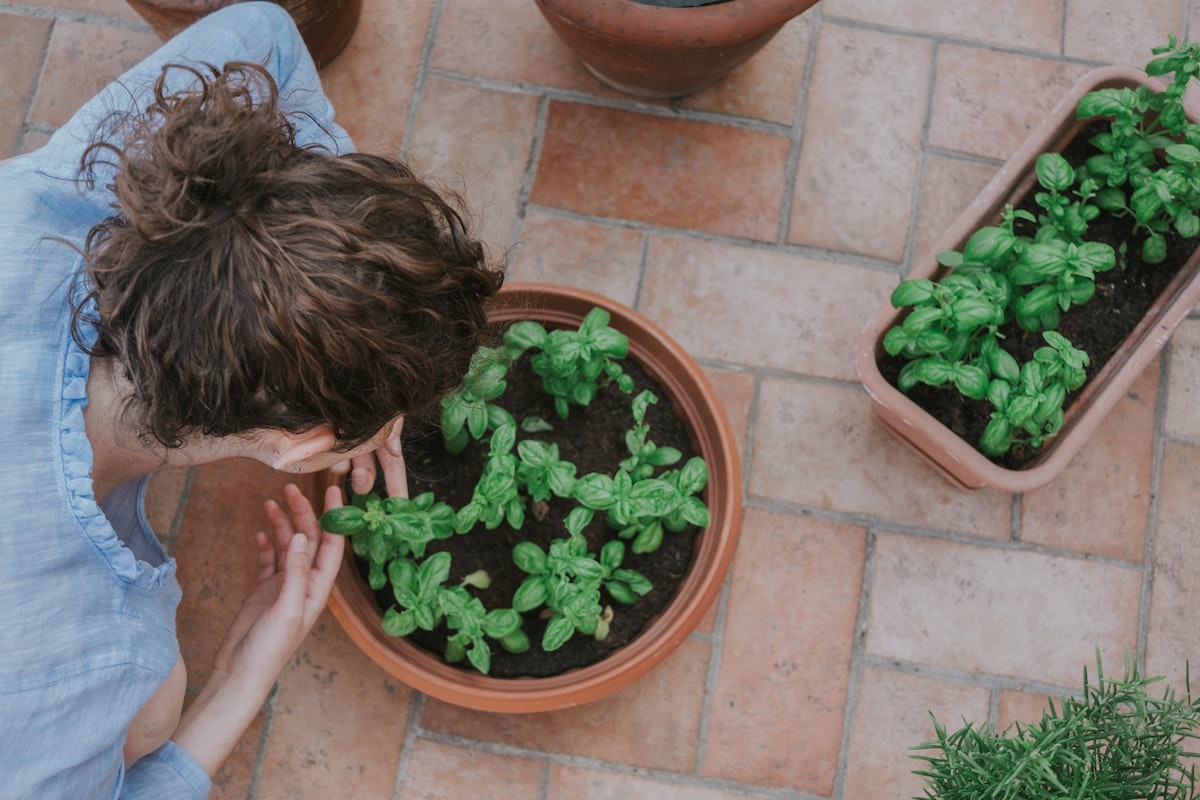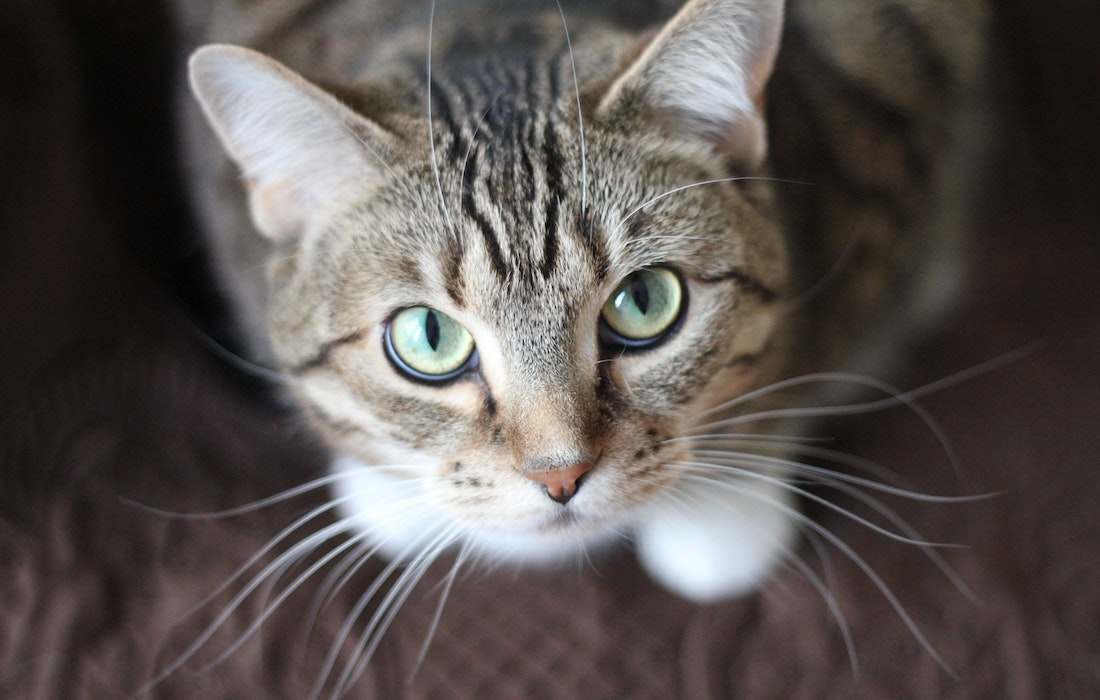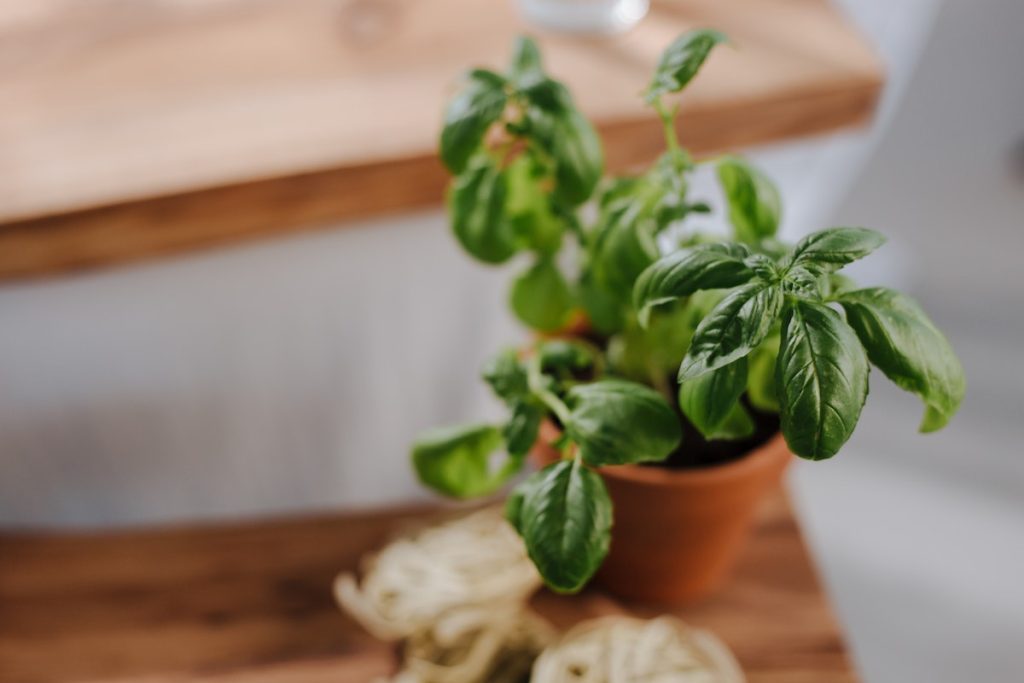Introduction
Pet safety is a critical aspect of responsible pet ownership that includes understanding which plants are safe for your feline friends. Being naturally curious, cats might nibble on plants in your home or yard. Such behavior could potentially pose a risk if the plant is toxic to them. Among the many plants you might have, one common herb is basil. This document aims to answer the question: “Is basil safe for cats?” It delves into the safety of basil concerning cats, offering detailed insights that every cat owner should be aware of.

The Popularity of Indoor Plants & Pet Safety
In recent years, there’s been a growing trend of incorporating indoor plants into your living spaces. They not only enhance the aesthetic appeal of your home but also improve air quality and create a sense of tranquility. However, with the rising popularity of indoor plants, it’s crucial for pet owners, particularly cat owners, to ensure that these plants are not harmful to their furry friends. Cats are known for their playful nature and curiosity, which might lead them to chew or ingest parts of these plants. As such, validating the safety of plants such as basil becomes essential to maintaining a pet-friendly environment.
Basil Plant And Cats: Know The Correlation
Cats have a built-in curiosity towards their environment, a trait that aids their survival in the wild. When brought into a cat’s living space, this curiosity often extends to indoor plants. Cats may be attracted to plants for various reasons – they might find the texture interesting, enjoy the rustling noise leaves make, or simply appreciate a change from their usual surroundings.
Moreover, cats exhibit pica, which entails eating things that aren’t typically food. This can lead them to nibble on the leaves, stems, or flowers of indoor plants, including basil. Nibbling is a natural part of feline behavior and can allow cats to explore their environment or relieve boredom. However, this behavior can become a concern if the plant in question has potential toxicity for cats. Thus, understanding whether commonly found indoor plants like basil are safe for cats to nibble on is a crucial component of responsible pet ownership.
Importance of Identifying Safe Plants for Cats’ Health
Recognizing safe plants becomes fundamentally important to prevent potential health issues in cats. A cat’s digestive system is not designed to process certain plant materials, and ingestion could lead to a wide range of issues – from mild gastrointestinal distress to severe toxicity. Some plants contain compounds that can cause symptoms such as vomiting, diarrhea, loss of appetite, organ damage, and even death in extreme cases.
Moreover, chewing certain plants may also lead to mechanical injuries – small, sharp plant parts can injure a cat’s mouth and throat, causing discomfort and potential infection.
Consequently, it is essential to ensure that the plants accessible to your cat are safe and non-toxic. Identifying safe plants like basil can protect your feline friend from unwanted health complications, assuring their well-being and keeping them safe in their home environment. The bottom line is, ensuring a plant-friendly environment that aligns with the health and safety of your pets is not just responsible pet ownership but also an act of love and care.
Basil Plant Information
Basil, scientifically known as Ocimum basilicum, is a culinary herb widely recognized for its vibrant green leaves and distinctive aroma. The plant typically grows to a height of 12-24 inches and features oval-shaped leaves with a smooth texture. The leaves are the primary part of the plant used in cooking, although the flowers are also edible and sometimes used for garnishing.
Basil comes in numerous varieties, each having unique properties and uses. The most common type is sweet basil, which features Italian cuisine and is the primary ingredient in traditional pesto. With its aniseed undertone, Thai basil is a staple in Southeast Asian dishes, while holy basil or tulsi is used extensively in Indian cuisine and herbal medicine.
Commonly used in various cuisines around the world, basil imparts a unique flavor that can be described as slightly sweet and savory with peppery notes. It serves as a fresh, flavorful addition to a range of dishes, from salads and sandwiches to pizzas and pasta. Moreover, it’s often used in sauces, marinades, and dressings and pairs well with ingredients like tomatoes, garlic, and olive oil. Basil is best used fresh and added towards the end of cooking to preserve its taste and aroma.
Basil: A Favorite in the Culinary World

The unique flavor and aroma of basil make it one of the most popular and widely used herbs in the culinary world. Its distinctive character has found a place in many cuisines and dishes across continents and cultures. The herb’s slightly sweet, savory profile with hints of peppery notes is a delightful addition that enhances the taste of various foods. The herb’s versatility is astonishing, from a simple tomato and basil salad in Italy to the complex flavors of a Thai basil chicken stir-fry.
Basil also offers an aromatic experience like no other. The moment you pluck a leaf from a basil plant, it releases a strong, pleasing aroma that is both refreshing and comforting. This aromatic quality is preserved in culinary preparations and can often be enhanced when paired with other ingredients. Whether it’s the unforgettable scent of a freshly made pesto or the comforting smell of a simmering tomato and basil soup, the aroma of basil can transform and elevate dishes. Consequently, whether for its taste or aroma, basil continues to be a cherished ingredient in kitchens around the world.
Does Basil Plant Benefit Cats’ Health?
While the question of basil’s safety for cats has been discussed in the previous sections, it’s worth exploring if basil provides any health benefits for your feline friends. Cats are obligate carnivores, which means their diet primarily consists of meat. They don’t have a biological need for plants in their diet; however, they might still ingest them out of curiosity or to induce vomiting if they have an upset stomach.
When it comes to basil, there’s no scientifically proven health benefit of this herb for cats. Antioxidants in basil can theoretically have a beneficial effect, but no conclusive research suggests that cats can effectively metabolize these antioxidants. Also, basil isn’t harmful in small quantities, but it’s essential to know that large amounts could cause mild gastrointestinal upset.
As always, it’s best to consult your veterinarian before introducing new elements into your cat’s diet or environment. They can provide professional and personalized advice tailored to your cat’s needs. Ultimately, while basil is safe for cats, it isn’t necessarily beneficial, and it certainly doesn’t replace the nutritional requirements provided by a balanced, cat-specific diet.
Potential Effects of Basil’s Aroma and Compounds on Cats’ Well-Being
The aroma of basil, much like its flavors, is unique and pleasing. While cats have a different sense of smell than humans, they can distinguish and react to different scents. There are anecdotal reports of cats being attracted to and enjoying the aroma of herbs, including basil. However, it’s essential to underline that there is no scientific evidence confirming that the scent of basil has a direct, positive effect on a cat’s well-being or mood.
The compounds found in basil include essential oils, flavonoids, and antioxidants. In humans, these compounds are known to possess anti-inflammatory and antimicrobial properties. However, a cat’s metabolism is significantly different from a human’s. Therefore, it’s unlikely that these compounds would provide any measurable health benefits if consumed by a cat.
Moreover, it’s important to note that while cats might be attracted to the scent of basil, this doesn’t mean they should eat it. As obligate carnivores, their diet should primarily consist of meat. While basil is not toxic to cats, it doesn’t have any known nutritional benefits for them. Therefore, while the aroma of basil might theoretically offer a novel sensory experience for cats, its consumption should be monitored primarily to prevent potential gastrointestinal discomfort from overeating.
Is Basil Plant Safe For Cats?
The safety of basil plants for cats is generally positive. Basil, by nature, does not contain any toxins that are harmful to cats. Therefore, if your cat nibbles on a basil leaf out of curiosity or boredom, it is unlikely to cause any harm, and there is no cause for immediate concern. However, like any non-meat food item in a cat’s diet, it should be in moderation.
Basil Plant Compounds and Cats
Basil is rich in a variety of compounds that contribute to its unique aroma, flavor, and potential health benefits in humans. These include volatile oils like estragole and linalool, flavonoids, and various antioxidants.
Estragole and linalool are primarily responsible for basil’s distinctive scent and flavor. However, their effect on cats is not well-documented, and any impact is likely negligible given the small amounts typically consumed when a cat nibbles on basil.
Flavonoids are a type of antioxidant that, in humans, contribute to overall health by combatting oxidative stress. However, cats metabolize foods differently than humans, and there is no evidence to suggest that the flavonoids present in basil offer cats any health benefits.
The other antioxidants in basil, like beta-carotene, are similarly beneficial to human health but offer no known benefits to cats. It’s important to note that these compounds are not harmful to cats but unnecessary for the feline diet.
In larger than typical quantities, the compounds in basil could potentially cause mild gastrointestinal upset in cats, with symptoms including vomiting, diarrhea, or decreased appetite. Such rare instances are most likely to occur if a cat consumes a large amount of basil beyond just a nibble or two.
Potential Risks of Basil Plants
While the compounds found in basil are generally safe for cats, it is essential to consider the potential risks of consuming this plant excessively. Overindulgence in basil can lead to gastrointestinal discomfort. This can include symptoms such as vomiting, diarrhea, or reduced appetite. The risk is not due to toxicity but the cat’s digestive system’s inability to process large amounts of plant material.
Additionally, the essential oils found in basil, while safe in small quantities, could cause an upset stomach if consumed in large amounts. Moreover, if your cat has a pre-existing health condition, like kidney disease, introducing new substances into its diet could exacerbate it.
Furthermore, exposure to pesticides or other harmful chemicals often used in plant cultivation poses another potential risk. If you’re growing basil at home, ensure it’s out of your cat’s reach if these substances are used.
Lastly, while rare, individual cats may have an allergic reaction to basil. Contact your vet immediately if your cat shows signs of an allergic reaction, such as itchiness, redness, or swelling.
Allergies and Sensitivities
While basil is generally safe for cats, it is possible to develop allergies or sensitivities to this plant. Although uncommon, allergic reactions to basil could manifest as skin irritations, itchiness, swelling, or redness. In more severe cases, difficulty breathing or vomiting could also occur.
On the other hand, sensitivity to basil might not trigger a full-blown allergic reaction but could still cause mild discomfort or illness in your cat. Signs of sensitivity could include gastrointestinal distress, loss of appetite, or lethargy.
It’s essential to closely monitor your cat’s behavior and physical condition after exposure to basil. If you notice any signs of an allergic reaction or sensitivity, promptly remove the basil plant from your cat’s environment and seek immediate veterinary care. Remember, each cat is unique, and what is harmless to one might not be safe for another.
Toxic Compounds in Basil
Contrary to some concerns, no specific compounds in basil are known to be toxic to cats. As mentioned earlier, basil contains compounds like estragole and linalool, which give the plant its distinct aroma and flavor. It also contains antioxidants like flavonoids and beta-carotene. However, none of these compounds are considered toxic to cats.
Nonetheless, it’s essential to remember that while these compounds aren’t harmful, they also don’t provide any known health benefits to cats since they metabolize substances differently than humans.
It’s also important to note that any consumption beyond a tiny amount could cause mild gastrointestinal upset. However, this is due to the volume of plant material rather than the specific compounds in basil themselves. Therefore, while the compounds in basil aren’t toxic to cats, basil should still be given sparingly and monitored closely.
Safe Ways to Introduce Basil
If you’re considering introducing a basil plant to your household with cats, there are several steps you can take to ensure it’s done safely:
- Placement: Place the basil plant in an area that isn’t easily reachable by your cat. Cats are curious creatures and may be tempted to play with, nibble on, or knock over the plant.
- Monitor Your Cat: Keep a close eye on your cat’s behavior around the plant. If your cat seems overly interested in the basil, moving the plant to an even more secure location might be best.
- Gradual Introduction: Instead of immediately introducing a large basil plant, consider starting with a small one. This will allow your cat to gradually get used to the plant’s presence.
- Check for Pesticides: If you’ve purchased the basil plant from a store, it might have been treated with pesticides that could harm cats. Always wash store-bought plants thoroughly before bringing them into your home, or consider growing your basil from seeds.
- Consult Your Vet: If you’re unsure about introducing basil or any other plant into your cat’s environment, your best bet is to consult a vet. They can offer professional advice tailored to your cat’s needs and habits.
Remember, while basil isn’t toxic to cats, it’s still best to prevent your cat from eating it. This is because the plant can cause minor gastrointestinal upset in cats if consumed in large amounts. Also, since cats are obligate carnivores, their bodies aren’t designed to process large plant material.
Using Basil as Enrichment
While direct consumption of basil by cats is optional and particularly beneficial, you might want to consider alternative ways to incorporate the aroma of this herb into your cat’s environment. A few suggestions include:
- Basil-Infused Toys: You could infuse cat toys with the scent of basil. Ensure you use a safe, non-toxic method to introduce the smell — such as placing the toy in a sealed bag with dried basil leaves. However, monitor your cat when playing with the toy to avoid ingesting basil.
- Basil-Scented Bedding: Sprinkle some dried basil leaves on your cat’s bedding. This could provide a unique olfactory experience for them. Again, observe your cat to ensure they are not attempting to eat the leaves.
- Basil Essential Oil Diffuser: Use a pet-safe diffuser to spread the scent of basil around your home. It’s crucial to use a minimal amount and ensure the oil is sufficiently diffused. Cats are sensitive to essential oils, and concentrated exposure could be harmful.
Remember, while these methods can offer your cat sensory enrichment, monitoring their response is essential. Any changes in behavior or signs of discomfort should be addressed immediately. It’s always a good idea to consult a veterinarian before significantly altering your pet’s environment.

Conclusion
Basil is generally safe for cats and contains no known toxic compounds that could harm them. However, while cats may be attracted to the scent of basil, it’s important to remember that they should not consume it in large amounts. Overconsumption could potentially lead to mild gastrointestinal discomfort. If you’re considering adding a basil plant to your household, ensure it’s placed out of reach from your cat and closely monitor their behavior around the plant. It’s always best to consult a veterinarian before introducing new elements to your cat’s environment and remember. At the same time, basil is not harmful. It doesn’t offer any known nutritional benefits for cats. Experimenting with basil’s aroma for sensory enrichment can be an option, but always under careful supervision.

